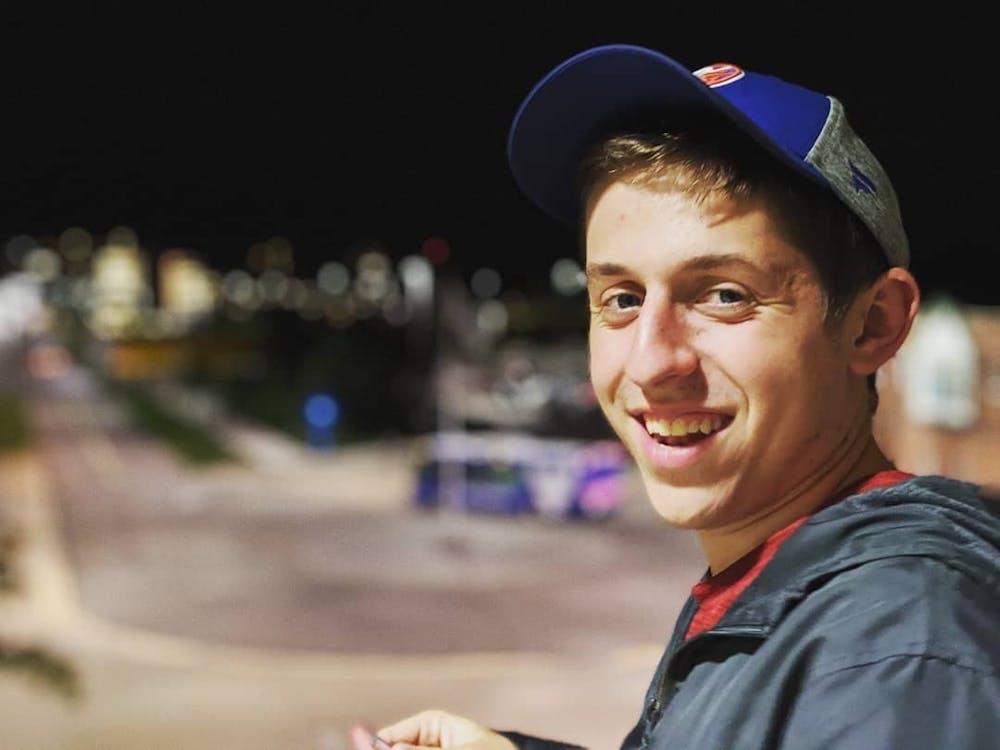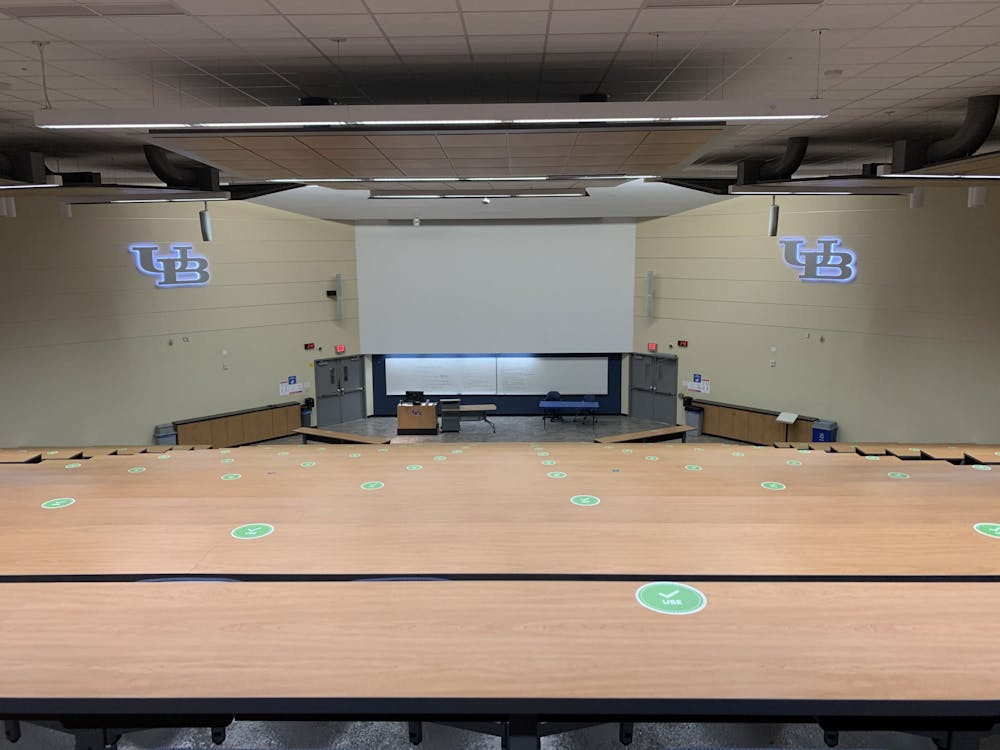UB students can’t catch a break.
Literally.
After weeks of heated debate — which the UB student representative called a “total bureaucratic disaster” — the Faculty Senate Executive Committee decided on Oct. 28 to eliminate the 2021 spring break.
UB President Satish Tripathi ended the intense back-and-forth scheduling debate — which pitted those who insisted a break is needed part-way through the semester to give everyone a chance to catch up and reboot, against those who felt COVID restrictions made a break too difficult — by signing off on the FSEC decision.
The dispute among faculty and administrators was fierce, lasted for weeks and included allegations of “backchannel intimidation.” It climaxed on Nov. 8, when SUNY Chancellor Jim Malatras implemented a comprehensive COVID plan for the spring semester. The new guidance specified that spring break and other holiday break periods would be suspended for all SUNY campuses, given the risks associated with COVID travel.
The Faculty Senate had considered “at least” three versions of the spring calendar, Robert S. Miletich, chair of the Faculty Senate, wrote in an email to UB administrators on Oct. 29. He said the committee acknowledges students’ desire for a break and the “utility that breaks from instruction have” for students and faculty, and that he had supported suggestions that included a break.
But he said he was left with little choice after Malatras’ order came “so late in the game.”
“I myself was happy with all versions, but with the edicts from SUNY Administration coming so late in the game, that no in-person instruction was to be performed prior to Feb. 1 and the desire to have commencements, if that opportunity arises, the current version is what we are left with,” Miletich wrote.
Mike Montoro, a mathematics Ph.D. student and the UB Council’s student representative, said “the way the decision was made was a total bureaucratic disaster” and that UB could have adopted suggestions that included a few days off.
He noted that on Oct. 6, UB Vice President for Academic Affairs Graham Hammill presented the Academic Continuity, Completion and Retention Committee’s proposed spring calendar to the FSEC.
This proposal was “largely the same” as a resolution the Council for Advocacy and Leadership (COAL) passed in November encouraging the Faculty Senate to prioritize student mental health in its decision, Montoro said.
That resolution called on the Faculty Senate to begin classes fully remotely on Monday, Jan. 25, before transitioning to in-person learning on Feb. 1. It also encouraged the committee to sprinkle in three days of spring recess throughout the semester.
Montoro said Hammill presented that calendar with “some reservations” because some other state universities were beginning to make decisions about their calendars and the pressure was on UB to do the same. So the proposed calendar was sent back to the Academic Policy and Grading Committee, a subcommittee within the Faculty Senate, for further revisions.
On Oct. 28, the FSEC received the newly proposed calendar. The committee was told the SUNY Chancellor’s office had, through some “backchannel communications,” told UB administrators that campuses would not be allowed to start classes before Feb. 1, according to Montoro.
“It was perceived by the FSEC from the backchannel communications that UB had virtually no choice” but to adopt this proposal, Montoro said.
But Montoro says the committee could have adopted a different proposal.
“I am not blaming the bureaucracy itself, but the people running the bureaucracy and their transparency,” Montoro said. “In particular, the new SUNY Chancellor Malatras (who was appointed unilaterally by the SUNY Board of Trustees) and his ‘backchannel intimidation’ strategy.”
Later that day, on Oct. 28, the resolution passed the committee, 17-0-2.
Before the vote, Miletich invoked the Charter of the Faculty Senate, Article VI, Paragraph F.1.b., which allows the FSEC to act as the representative of the full Senate.
In his email to UB administrators dated Oct. 29, Miletich explained he felt an “urgency” to vote on the resolution since the Registrar’s Office wanted the approved schedule by Nov. 2.
But Montoro sees it differently.
He said Miletich allowed for “only 20 faculty senators to decide the fate of thousands of students without their knowledge” when he invoked this part of the standing orders, adding that this was a “particularly worrisome” action.
“Normally, a resolution of that magnitude would be heard at the full Faculty Senate meeting and voted on there as well,” Montoro said. But “unbeknownst to the FSEC, Miletich had decided” to invoke that statute and the “full Faculty Senate did not even have a chance to vote on the Spring 2021 calendar” during its scheduled Nov. 17 meeting.
Tripathi approved and promulgated the resolution on Nov. 10.
The calendar was “carefully determined by the university administration and the FSEC, with multiple, complex considerations needing to be taken into account,” according to UB spokesperson John DellaContrada.
The main concerns included the health and safety of the campus community and the need to align with SUNY academic continuity guidelines not permitting spring holiday periods, DellaContrada said.
In his reopening plan, Malatras said campuses are allowed to build in “single-day, midweek reading days throughout the semester as an alternative instructional pause.” But UB did not choose to incorporate that suggestion into its calendar.
The SUNY reopening plan also calls for students to be tested prior to returning to campus and to complete a seven-day precautionary quarantine upon arrival.
“SUNY’s guidance for the spring semester was drafted in consultation with student and faculty leaders, as well as public health experts,” SUNY spokeswoman Holly Liapis wrote in an email. “It is based on federal and state guidelines, as well as protocols implemented during the fall semester that worked to keep positive rates below one percent. There has been and will continue to be full transparency of SUNY’s guidance, which is why you will also see in the announcement and within the guidance a directive to provide a ‘What Students Should Know’ clear, plain language notice so students know what to expect for the spring.”
A. Scott Weber, provost and executive vice president for academic affairs, said the calendar was approved to “prioritize the health and safety of the campus,” to “avoid extending the semester beyond the current end date” and to “align with anticipated SUNY guidelines.”
Classes will begin next semester on Feb. 1 and run until May 7, according to the approved calendar. Final exams will take place from May 10 to 15, with commencement weekend being held from May 14 to 16.
Some students have expressed concern over the calendar, saying they “look forward” to spring break and that going 15 consecutive weeks without a pause is “absolute insanity,” as The Spectrum reported in November.
In its resolution, COAL said it “recognizes that the mental health of students in inexorably tied to the stressors and work environment in their primary function as students and, as the voice of those students, is doubly concerned about the deletion of any and all days off as a serious threat to the well-being and academic performance as a whole for the university.”
DellaContrada encouraged students to focus on self-care, even though there won’t be any breaks in the spring.
“Students are encouraged to plan ahead; to assess their course selections and workloads; to communicate regularly with their advisors and professors; and to seek support whenever needed,” DellaContrada wrote. “A variety of resources are available, from academic support services, to virtual wellness workshops, to mental health counseling options.”
ADDITION: This story has been updated to include a quote from the SUNY press secretary.
Justin Weiss is the senior features editor and can be reached at justin.weiss@ubspectrum.com

Justin Weiss is The Spectrum's managing editor. In his free time, he can be found hiking, playing baseball or throwing things at his TV when his sports teams aren't winning. His words have appeared in Elite Sports New York and the Long Island Herald. He can be found on Twitter @Jwmlb1.





